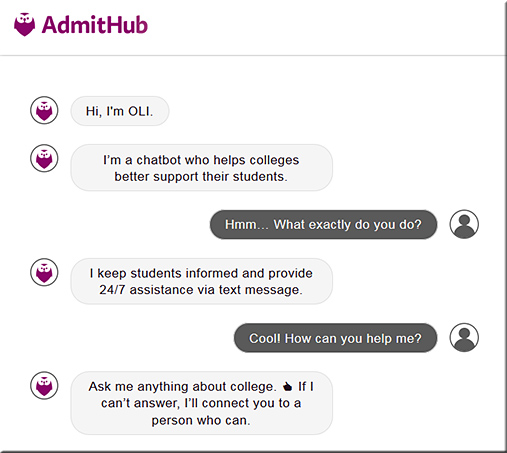Chatbots: The next big thing — from dw.com
Excerpt:
More and more European developers are discovering the potential of chatbots. These mini-programs interact automatically with users and could be particularly useful in areas like online shopping and news delivery. The potential of chatbots is diverse. These tiny programs can do everything from recognizing customers’ tastes to relaying the latest weather forecast. Berlin start-up Spectrm is currently devising bots that deliver customized news. Users can contact the bot via Facebook Messenger, and receive updates on topics that interest them within just a few seconds.
MyPrivateTutor releases chatbot for finding tutors — from digitaljournal.com
MyPrivateTutor, based in Kolkata, matches tutors to students using proprietary machine learning algorithms
Excerpt:
Using artificial intelligence, the chatbot helps us reach a wider segment of users who are still not comfortable navigating websites and apps but are quite savvy with messaging apps”, said Sandip Kar, co-founder & CEO of MyPrivateTutor (www.myprivatetutor.com), an online marketplace for tutors, has released a chatbot for helping students and parents find tutors, trainers, coaching classes and training institutes near them.
Story idea: Covering the world of chatbots — from businessjournalism.org by Susan Johnston Taylor
Excerpt:
Chatbots, computer programs designed to converse with humans, can perform all sorts of activities. They can help users book a vacation, order a pizza, negotiate with Comcast or even communicate with POTUS. Instead of calling or emailing a representative at the company, consumers chat with a robot that uses artificial intelligence to simulate natural conversation. A growing number of startups and more established companies now use them to interact with users via Facebook Messenger, SMS, chat-specific apps such as Kik or the company’s own site.
…
To cover this emerging business story, reporters can seek out companies in their area that use chatbots, or find local tech firms that are building them. Local universities may have professors or other experts available who can provide big-picture context, too. (Expertise Finder can help you identify professors and their specific areas of study.)
How chatbots are addressing summer melt for colleges — from ecampusnews.com
Excerpt:
AdmitHub, an edtech startup which builds conversational artificial intelligence (AI) chatbots to guide students on the path to and through college, has raised $2.95 million in seed funding.
Why higher education chatbots will take over university mobile apps — from blog.admithub.com by Kirk Daulerio
Excerpt (emphasis DSC):
Chatbots are the new apps and websites combined
Chatbots are simple, easy to use, and present zero friction. They exist on the channels that people are most familiar with like Messenger, Twitter, SMS text message, Kik, and expanding onto other messaging applications. Unlike apps, bots don’t take up space, users don’t have to take time to get familiar with a new user interface, and bots will give you an instant reply. The biggest difference with chatbots compared to apps and websites is that they use language as the main interface. Websites and apps have to be searched and clicked, while bots and people use language, the most natural interface, to communicate and inform.
From DSC:
I think messaging-based chatbots will definitely continue to grow in usage — in numerous industries, including higher education. But I also think that the human voice — working in conjunction with technologies that provide natural language processing (NLP) capabilities — will play an increasingly larger role in how we interface with our devices. Whether it’s via a typed/textual message or whether it’s via a command or a query relayed by the human voice, working with bots needs to be on our radars. These conversational messaging agents are likely to be around for a while.
Addendum:









